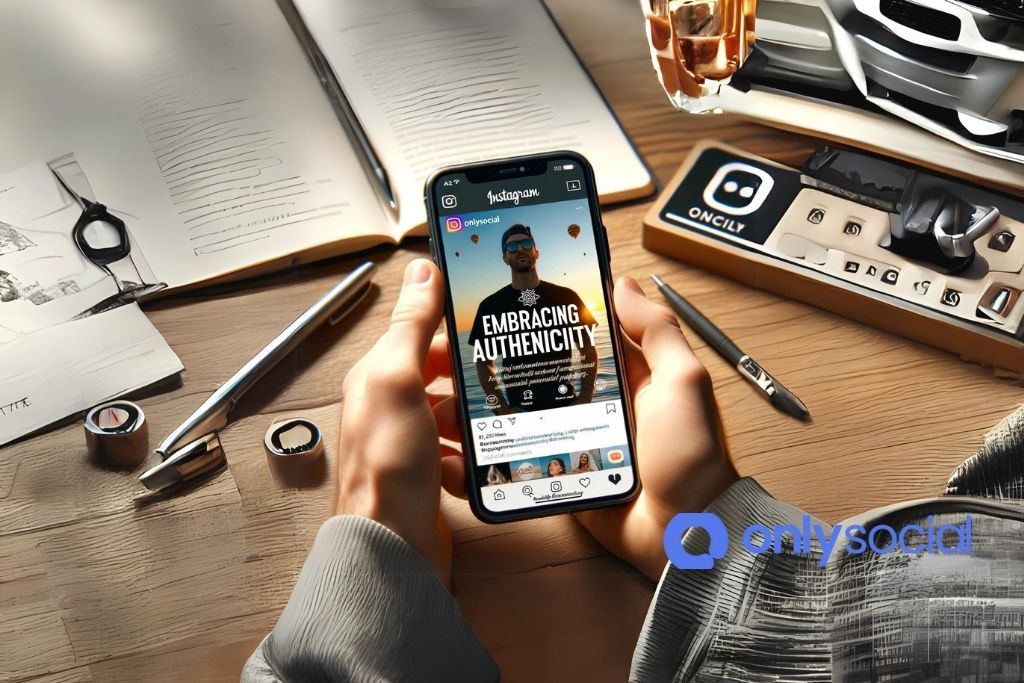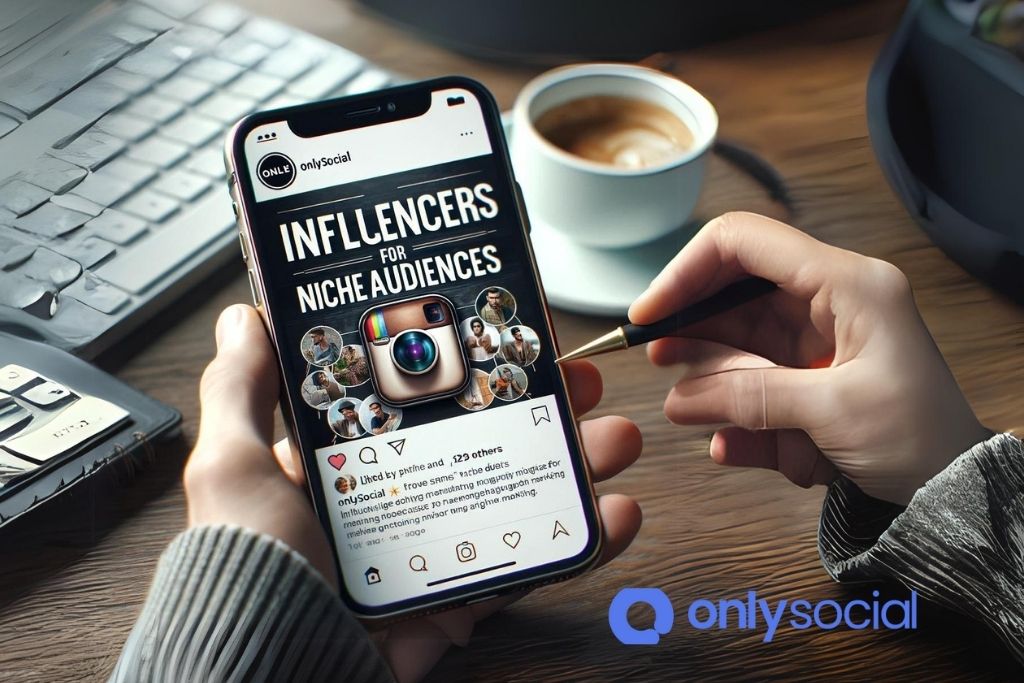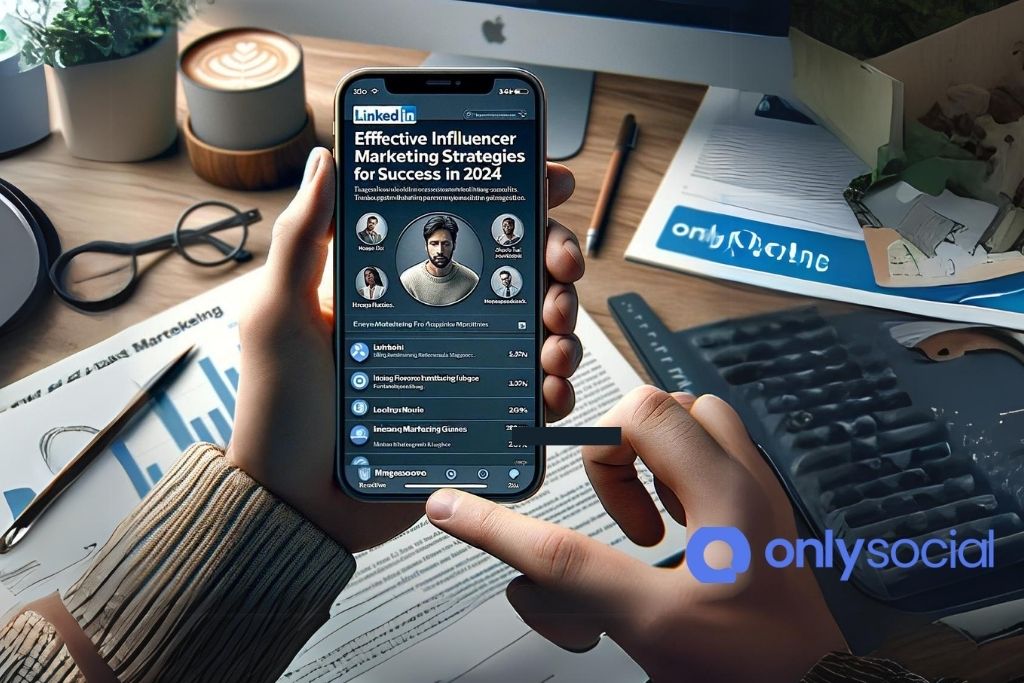In the dynamic world of digital marketing, the role of influencers has become increasingly pivotal. As we step into 2024, the landscape of influencer marketing continues to evolve, demanding more innovative and strategic approaches to capture audience attention and foster brand loyalty. This evolution underscores the necessity for effective influencer marketing strategies that not only resonate with target demographics but also stand out in a saturated market.
The concept of influencer marketing is no longer just about partnering with individuals who have a large following. It’s about identifying and collaborating with influencers whose values align with those of the brand, ensuring a genuine connection with the audience. The effectiveness of these strategies lies in their ability to leverage the trust and credibility influencers have built with their followers, turning endorsements into meaningful engagement and conversions for brands.
Moreover, the advent of new social media platforms and technologies has broadened the scope of what’s possible within influencer marketing, presenting new opportunities and challenges. Brands and marketers must stay ahead of the curve, adapting their strategies to remain relevant and impactful. This necessitates a deep understanding of both the digital landscape and the ever-changing consumer behaviours and preferences.
Effective influencer marketing strategies in 2024 are characterized by their emphasis on authenticity, creativity, and strategic alignment with broader marketing goals. These strategies are not just about creating noise; they’re about creating value—for the influencer, the brand, and most importantly, the audience. As we delve deeper into the intricacies of influencer marketing, it becomes clear that success hinges on a nuanced approach that respects and leverages the unique dynamics of influencer-audience relationships.
In this light, the journey towards mastering effective influencer marketing strategies is both challenging and rewarding. It requires marketers to think critically, act creatively, and adapt swiftly to the ever-changing digital landscape. By focusing on building meaningful connections, embracing innovation, and prioritizing authenticity, brands can unlock the full potential of influencer marketing in 2024 and beyond.
Table of Contents
- 1 Embracing Authenticity: The Key to Influencer Credibility
- 2 Leveraging Micro-Influencers for Niche Audiences
- 3 Utilizing Data-Driven Strategies for Enhanced Engagement
- 4 Focusing on Long-Term Partnerships Rather Than One-Off Campaigns
- 5 Prioritizing Diversity and Inclusion in Influencer Selection
- 5.0.1 Understanding the Importance of Diversity in Effective Influencer Marketing Strategies
- 5.0.2 The Role of Diversity in Enhancing Brand Image
- 5.0.3 Strategies for Implementing Diversity in Influencer Selection
- 5.0.4 Overcoming Challenges in Diverse Influencer Marketing
- 5.0.5 Leveraging Diversity for Broader Audience Engagement
- 5.0.6 Effective Influencer Marketing Strategies: Case Studies
- 6 Incorporating Video Content: The Rising Star of Influencer Marketing
- 6.0.1 The Shift Towards Video in Effective Influencer Marketing Strategies
- 6.0.2 Understanding the Impact of Video Content
- 6.0.3 Best Practices for Collaborating with Influencers on Video Content
- 6.0.4 Case Studies: Successful Video Influencer Campaigns
- 6.0.5 Tools and Technologies for Enhancing Video Content
- 6.0.6 The Role of Video Analytics in Refining Strategies
- 7 BONUS
- 8 Frequently Asked Questions
Embracing Authenticity: The Key to Influencer Credibility

Authenticity has become the cornerstone of effective influencer marketing strategies, distinguishing successful campaigns from those that fail to resonate with audiences. In an era where consumers are bombarded with advertising from all angles, the genuine connection between an influencer and their followers can make or break the impact of a marketing message. This section explores why authenticity is crucial and how brands and influencers can work together to maintain it.
Understanding Authenticity in Influencer Marketing
Authenticity in influencer marketing is about creating a sincere and transparent relationship between the influencer, their audience, and the brands they promote. It involves influencers sharing their true opinions, experiences, and recommendations, rather than merely serving as a billboard for hire. This authenticity fosters trust and credibility among followers, making the influencer’s endorsements more impactful.
Strategies for Authentic Engagement
- Selecting the Right Influencers: The first step towards authentic engagement is choosing influencers whose values align with the brand’s. This alignment ensures that any promoted content feels natural rather than forced.
- Encouraging Genuine Content: Brands should encourage influencers to create content that reflects their true voice and style. Scripted messages are less effective than personal stories or genuine endorsements.
- Transparency with Followers: Both influencers and brands must be transparent about the nature of their partnerships. Disclosures about sponsored content should be clear and conspicuous, helping to maintain the trust of the audience.
Building Authentic Connections
- Engage Beyond Sponsored Content: Authentic relationships are built over time. Influencers and brands should look for opportunities to engage with their audience beyond sponsored posts, such as through interactive Q&A sessions, live streams, or community events.
- Feedback and Adaptation: Listening to audience feedback is crucial for maintaining authenticity. Brands and influencers should be open to adapting their strategies based on what followers say they want and appreciate.
Case Studies of Authenticity in Action
To illustrate the power of authenticity, this section could explore case studies where influencers and brands have successfully partnered to create campaigns that felt genuine and resonated deeply with audiences. These examples should highlight the strategies used to maintain authenticity and the positive outcomes in terms of engagement, trust, and ultimately, campaign success.
By prioritizing authenticity, influencers and brands can develop more meaningful connections with their audiences. This not only enhances the credibility of the influencer but also amplifies the effectiveness of the marketing message. As part of a broader set of effective influencer marketing strategies, embracing authenticity is indispensable in the pursuit of lasting impact and success.
Leveraging Micro-Influencers for Niche Audiences

Understanding the Power of Micro-Influencers
Micro-influencers, typically defined as influencers with 1,000 to 100,000 followers, offer a unique advantage for effective influencer marketing strategies. Unlike their macro or mega counterparts, micro-influencers often boast higher engagement rates, authenticity, and a closer connection with their audience. This section delves into how leveraging these influencers can significantly benefit niche markets, providing a targeted and cost-effective approach to influencer marketing.
Why Niche Matters
Focusing on niche audiences allows brands to tailor their messages more precisely and effectively. Micro-influencers, often being highly specialized in particular topics or industries, can introduce products or services to a highly engaged and relevant audience. This specificity leads to better conversion rates, as the promoted content resonates more deeply with a focused group of potential customers who trust the influencer’s recommendations.
Identifying the Right Micro-Influencers
- Research and Discovery: Utilize social media platforms, influencer databases, and hashtag searches to find influencers that align with your brand’s values and target niche.
- Engagement and Authenticity: Look for micro-influencers with high engagement rates, genuine content, and a loyal following. Authenticity should be a key factor in your selection process to ensure the influencer’s endorsements will be trusted and valued by their audience.
- Relevance: Ensure the influencer’s content and audience demographics align with your brand. An influencer who regularly engages with your target market and has content that complements your brand’s products or services is ideal.
Implementing Micro-Influencer Campaigns
- Setting Clear Objectives: Define what you hope to achieve with your micro-influencer campaign, whether it’s increasing brand awareness, driving sales, or launching a new product. Clear objectives will help in measuring the success of your campaign.
- Creating a Content Strategy: Collaborate with micro-influencers to create content that feels natural and authentic to their usual postings. This could include sponsored posts, stories, reviews, or tutorials that highlight your product in a way that feels organic to the influencer’s feed.
- Monitoring and Measuring Success: Utilize tracking codes, affiliate links, and social media analytics to monitor the performance of your micro-influencer campaigns. Engagement rate, click-through rate, and conversion rate are key metrics to assess the effectiveness of your influencer marketing strategies.
Building Long-Term Relationships
Fostering long-term relationships with micro-influencers can lead to ongoing benefits for your brand. Repeat collaborations not only build trust among the influencer’s audience but also create a more cost-effective marketing strategy over time. Developing these partnerships involves regular communication, fair compensation, and mutual respect for each other’s brand and audience.
By leveraging micro-influencers for niche audiences, brands can execute effective influencer marketing strategies that resonate deeply with specific segments of the market. This approach not only enhances the authenticity of brand endorsements but also ensures a higher engagement rate, driving meaningful results for both the brand and the influencer.
Utilizing Data-Driven Strategies for Enhanced Engagement

In the realm of effective influencer marketing strategies, leveraging data-driven insights stands out as a pivotal approach for maximizing engagement and ensuring the success of influencer campaigns. This section delves into the importance of data analytics, explores various tools and techniques, and provides guidance on optimizing campaigns using data.
Understanding the Role of Data in Influencer Marketing
Data analytics provides an empirical foundation to influencer marketing, allowing brands to make informed decisions rather than relying on intuition. By analyzing engagement metrics, audience demographics, and content performance, marketers can identify what resonates with their target audience, tailor their strategies accordingly, and allocate resources more efficiently.
Tools and Techniques for Analyzing Influencer Campaign Performance
- Engagement Analytics Platforms: Utilize platforms that offer detailed insights into engagement rates, including likes, comments, shares, and more, to gauge the effectiveness of influencer content.
- Audience Analysis Tools: Employ tools that provide demographic and psychographic data about the influencer’s audience, ensuring alignment with the brand’s target market.
- Content Performance Metrics: Track content performance through metrics such as click-through rates (CTR), conversion rates, and ROI. This helps in understanding the content types and messages that drive the most action.
Key Data Points to Monitor
- Engagement Rate: Measures the level of interaction content receives relative to the influencer’s number of followers.
- Reach and Impressions: Indicates the total number of users who have seen the content.
- Follower Growth: Tracks the increase in an influencer’s follower count, which can be attributed to a successful campaign.
- Brand Sentiment Analysis: Analyzes the audience’s feelings and attitudes towards the brand before and after the influencer campaign.
Optimizing Campaigns Using Data
- A/B Testing: Conduct A/B tests with different types of content, posting schedules, and calls to action (CTAs) to discover the most effective strategies for engaging your audience.
- Segmentation and Personalization: Use audience data to segment the market and personalize content, ensuring that messages resonate with different audience groups.
- Adapting to Audience Preferences: Adjust content and influencer selection based on insights into audience preferences and behaviors, focusing on what drives the highest engagement and conversion rates.
- Performance Benchmarking: Set benchmarks based on data from previous campaigns or industry standards to continuously measure and improve the performance of influencer marketing efforts.
Focusing on Long-Term Partnerships Rather Than One-Off Campaigns
In the realm of effective influencer marketing strategies, the shift towards cultivating long-term partnerships with influencers, as opposed to relying solely on one-off campaigns, marks a significant evolution. This approach not only amplifies the authenticity of brand endorsements but also leverages the growing trust between influencers and their followers, fostering a deeper connection with the audience.
The Advantages of Building Lasting Relationships
Long-term collaborations with influencers offer a myriad of benefits that transcend the immediate gains of short-term campaigns. Such relationships allow for a more organic integration of brand messages into the influencer’s content, making promotions appear less transactional and more genuine. Over time, this can lead to higher engagement rates, increased trust in the brand, and, ultimately, a stronger brand loyalty among the influencer’s audience.
Crafting Meaningful Collaborations
To forge successful long-term partnerships, brands need to look beyond mere follower counts and engagement rates. Identifying influencers whose values align with the brand’s identity is crucial. This synergy ensures that the influencer’s content resonates with both their existing audience and the brand’s target demographic. Once a compatible influencer is identified, brands should focus on creating a collaborative relationship that respects the influencer’s creativity and insights. This includes giving influencers the freedom to craft genuine content that aligns with their personal brand while still meeting the marketing objectives.
Strategies for Nurturing Long-Term Influencer Relationships
- Transparent Communication: Establish clear expectations and maintain open lines of communication throughout the partnership.
- Creative Freedom: Allow influencers to inject their personality and creativity into the brand’s campaigns to ensure authenticity.
- Mutual Support: Engage with the influencer’s content, provide them with opportunities for growth, and offer exclusive insights into upcoming products or services.
- Performance Incentives: Consider performance-based incentives to motivate and reward influencers for their contributions to the brand’s success.
- Regular Check-ins: Schedule regular meetings to discuss campaign performance, upcoming initiatives, and ways to enhance the collaboration.
Real-World Examples of Successful Long-Term Partnerships
Highlighting examples of brands that have successfully implemented long-term influencer partnerships can provide valuable insights into the practical application of these strategies. These case studies demonstrate the incremental benefits of sustained collaborations, such as increased brand awareness, stronger audience engagement, and significant boosts in ROI over time.
Prioritizing Diversity and Inclusion in Influencer Selection
Understanding the Importance of Diversity in Effective Influencer Marketing Strategies
- Defining Diversity and Inclusion: Begin by defining what diversity and inclusion mean within the context of influencer marketing. Explain how these concepts extend beyond race and gender to include age, nationality, disability, and more, aligning with a broader audience’s values and perspectives.
The Role of Diversity in Enhancing Brand Image
- Building a Positive Brand Image: Discuss how incorporating a diverse range of influencers can enhance a brand’s image by reflecting a commitment to inclusivity and social responsibility. Highlight how this approach can resonate with a wider audience, fostering a deeper connection with the brand.
Strategies for Implementing Diversity in Influencer Selection
- Conducting Thorough Research: Emphasize the importance of researching to find influencers who represent diverse backgrounds and have a genuine connection with their audience. Suggest using tools and platforms that provide insights into the demographics of an influencer’s audience.
- Setting Clear Goals for Diversity: Recommend brands set explicit goals related to diversity and inclusion in their influencer marketing strategies. This could include aiming for a certain percentage of influencers from underrepresented groups or ensuring a variety of perspectives are showcased in their campaigns.
- Evaluating Influencer Impact Beyond Numbers: Advise on looking beyond follower count and engagement rates to consider the influencer’s impact on their community. Highlight how influencers who advocate for diversity and inclusion can lend authenticity and credibility to the brand’s efforts.
Overcoming Challenges in Diverse Influencer Marketing
- Addressing Potential Backlash: Acknowledge potential challenges, such as backlash from parts of the audience. Offer strategies for responding to such challenges with transparency and commitment to the brand’s values of diversity and inclusion.
- Maintaining Authenticity: Stress the importance of ensuring that efforts to diversify influencer partnerships are authentic and not just for show. Encourage ongoing dialogue with diverse communities to understand their needs and perspectives better.
Leveraging Diversity for Broader Audience Engagement
- Expanding Audience Reach: Illustrate how diverse influencer partnerships can help brands reach new audiences and tap into markets they may not have engaged with previously.
- Creating Relatable Content: Discuss how diverse influencers can create content that resonates with a broader spectrum of people, making marketing campaigns more relatable and effective.
Effective Influencer Marketing Strategies: Case Studies
- Showcasing Success Stories: Provide examples of brands that have successfully implemented diversity and inclusion in their influencer marketing strategies. Highlight the positive outcomes, such as increased brand loyalty, improved engagement rates, and enhanced brand perception among diverse audience segments.
Incorporating Video Content: The Rising Star of Influencer Marketing
The Shift Towards Video in Effective Influencer Marketing Strategies
In the dynamic world of digital marketing, video content has emerged as a compelling force, particularly within the realm of effective influencer marketing strategies. As consumers increasingly favor visual and interactive content, leveraging video in influencer campaigns offers a unique opportunity for brands to connect with their audience in a more engaging and authentic manner.
Understanding the Impact of Video Content
Video content, with its ability to convey emotions, showcase products in action, and tell stories, has a profound impact on audience engagement. It’s not just about promoting a product; it’s about creating an experience that resonates with viewers. This section explores how video content can enhance the effectiveness of influencer marketing strategies by offering insights into consumer behavior and preferences.
Best Practices for Collaborating with Influencers on Video Content
- Selecting the Right Platform: Each social media platform has its own set of norms and audience expectations for video content. From short-form videos on TikTok and Instagram Reels to more detailed content on YouTube, choosing the right platform is crucial for maximizing impact.
- Creative Freedom: Allowing influencers creative freedom in the creation of video content can lead to more authentic and relatable content. This part discusses the balance between brand guidelines and influencer creativity.
- Engagement Through Storytelling: Emphasizing the importance of storytelling in video content to create a memorable and emotional connection with the audience.
Case Studies: Successful Video Influencer Campaigns
This section showcases real-world examples of brands that have successfully implemented video content into their influencer marketing strategies. It highlights the campaign objectives, the execution, and the outcomes, offering valuable lessons and insights for brands looking to explore video content in their marketing efforts.
Tools and Technologies for Enhancing Video Content
With advancements in technology, creating high-quality video content has never been more accessible. This part reviews the latest tools and technologies that influencers and brands can use to produce professional-grade videos. From editing software to interactive features like polls and Q&A sessions, these tools can significantly enhance the viewer’s experience and engagement levels.
The Role of Video Analytics in Refining Strategies
Measuring the success of video content is crucial for optimizing future campaigns. This section delves into the key metrics and analytics that brands should monitor to assess the performance of their video influencer marketing campaigns. Understanding these analytics can help brands refine their strategies, improve engagement, and achieve a better ROI.
BONUS
Leverage OnlySocial’s Post Planning and Scheduling to elevate your influencer marketing. Manage unlimited social profiles, enjoy unlimited posting, and ensure your content reaches audiences at the perfect time. Start with a commitment-free 7-day trial to streamline your strategy across all networks.
Frequently Asked Questions
What defines effective influencer marketing strategies in 2024?
Effective influencer marketing strategies are those that create authentic connections between brands and their target audience through influencers. These strategies are data-driven, focus on long-term partnerships, leverage video content, and prioritize authenticity, diversity, and engagement.
How can I measure the success of my influencer marketing strategy?
Success can be measured through various metrics, including engagement rates, conversion rates, brand awareness (measured through surveys and social listening), and return on investment (ROI). Utilizing analytics tools to track these metrics is crucial for assessing the effectiveness of your campaigns.
What are the benefits of focusing on long-term partnerships in influencer marketing?
Long-term partnerships with influencers foster trust and authenticity, which are critical for engaging the audience. These relationships also allow for a deeper understanding of the brand’s values and messaging, leading to more impactful and cohesive campaigns.
How important is authenticity in effective influencer marketing strategies?
Authenticity is paramount in influencer marketing. Campaigns that highlight genuine use and honest opinions about a product or service tend to resonate more with audiences, thereby enhancing trust and credibility for the brand.
Can small businesses benefit from effective influencer marketing strategies?
Absolutely. Small businesses can significantly benefit from influencer marketing by partnering with micro-influencers who have a dedicated and engaged niche audience. This approach is cost-effective and can lead to high engagement and conversion rates.
How do I choose the right influencers to align with my marketing strategy?
Choosing the right influencers involves looking at their audience demographics, engagement rate, content quality, and alignment with your brand’s values and aesthetics. It’s also important to consider their reputation and authenticity to ensure they can effectively endorse your product or service.
What role does video content play in effective influencer marketing strategies?
Video content plays a crucial role due to its high engagement rates and the ability to convey messages in a dynamic and immersive way. It’s especially effective on platforms like Instagram, YouTube, and TikTok, where users consume video content voraciously.
How can I ensure diversity and inclusion in my influencer marketing campaigns?
To ensure diversity and inclusion, actively seek out and collaborate with influencers from various backgrounds, cultures, and communities. This approach not only enriches your campaign but also broadens your reach and resonance with diverse audience segments.
What are some common pitfalls to avoid in influencer marketing?
Common pitfalls include failing to vet influencers properly, neglecting to set clear campaign objectives and expectations, ignoring the importance of authentic content, and not leveraging data to inform strategy adjustments.
How has influencer marketing evolved in recent years, and what trends are emerging in 2024?
Influencer marketing has evolved from simple product endorsements to more complex, story-driven campaigns that prioritize authenticity and engagement. Emerging trends include the rise of video content, the importance of data-driven decision-making, and an increased focus on long-term partnerships and diversity.




